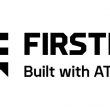FirstNet Authority board approves plans to enhance FirstNet core for 5G, expand deployable coverage capabilities
FirstNet Authority board members yesterday voted unanimously to have the organization’s staff begin procurement processes to reinvest funding into making the FirstNet LTE core ready for 5G services and to expand the FirstNet deployable-network program.
Both area identified for reinvestment were expected. FirstNet Authority Chairman Ed Horowitz previously identified deployable enhancements and preparing to make the physically separate FirstNet LTE core ready for 5G services as priorities for the organization during July’s PSCR meeting in Chicago and reiterated those targets during a presentation last month at the APCO event in Baltimore.
“Today is another major milestone for the FirstNet Authority,” Horowitz said prior to the vote during yesterday FirstNet Authority board meeting, which was webcast. “For the first time, the board will be taking action to advance the reinvestment of funds to enhance and evolve the network. We are positioned to do this because of the FirstNet Authority’s unique business model that ensures the sustainability of the organization and the FirstNet network.
“The business model also ensures that we, the FirstNet Authority, are directing the evolution of the network based on what public safety tells us they need from the network, both today and looking into the future. This is something that public safety has never had before and is yet another feature that distinguishes FirstNet from anything else in the marketplace today.”
A year ago, the FirstNet Authority board approved the organization budget for fiscal year 2019 that allocated $78 million for reinvestment into the network. Last month, the board approved the fiscal year 2020 budget that includes $145.1 million for reinvestment into the FirstNet system—a figure bolstered by a one-time transfer of $46 million from the National Telecommunications and Information Administration (NTIA).
While the board voted to have the FirstNet Authority staff pursue procurement to expand the deployable program and to take steps to prepare the FirstNet core for 5G, no timetable for completing the procurement was announced, and no estimated amount of money was identified for either project.
Ed Parkinson, executive director of the FirstNet Authority’s external affairs division, said that that FirstNet Authority staff will proceed “per federal-acquisition regulations” throughout the procurement process.
“We have to follow the letter of the law and the procurement process in great detail,” Parkinson said during the meeting. “I look forward to working with the folks inside the Department of Commerce to ensure that … our investment process is conducted in the most appropriate and detailed and … the cleanest way possible. It is so important that this is done in the appropriate manner.”
Parkinson said that FirstNet Authority management will report back to board members—and to public-safety end users—as much information as procurement regulations allow to be shared in updates throughout the process.
However, no statements during the public portion of the board meeting indicated the manner in which the procurement for the projects will be conducted. Horowitz has said that reinvestments approved by the FirstNet Authority board can be executed in one of two ways: (1) as an open procurement with a formal request for proposals (RFP) that outlines the scope and requirement that a vendor would be required to meet; or (2) as a new task order that is added to AT&T’s existing contract with the FirstNet Authority to build and maintain the nationwide public-safety broadband network (NPSBN).
Multiple industry sources indicate that some reinvestment domains may lend themselves to an open procurement, but these two initial projects—particularly the work associated with the FirstNet core—likely would be executed as an additional task order for AT&T, in an effort to ensure continuity and security throughout the system in the most practical manner.
Jeremy Zollo, executive director of the FirstNet Authority’s enterprise strategy, said the FirstNet deployable program has been one of the popular features used by FirstNet subscribers, noting that number of public-safety requests for deployable network support has increased dramatically since the program was initiated.
At no additional cost, FirstNet subscribers can request deployable network equipment to provide additional capacity at planned events, provide coverage in areas that are outside the range of the FirstNet terrestrial network, or provide network support for public safety as they respond to catastrophic events, Zollo said. Some deployables have remained in place for as long as six months, he said.
“Everything in the service that’s offered is for free, and we have seen an increase the use of those assets over the last year and half, in particular,” Zollo said during the meeting. “That has demonstrated the value to public safety and our continued commitment to listen to public safety’s needs and push it forward.”
Initially, the FirstNet deployable program utilized 72 vehicular-based assets, such as SatCOLTs. This has been expanded to include 3 drones that can provide LTE coverage in areas where vehicles may not be able to reach, and FirstNet Authority officials will consider other flexible options to address coverage issues—for instance, aerial and amphibious solutions—as well as increasing the number of more traditional assets, according to Zollo.
FirstNet Authority CTO Jeff Bratcher said the need to upgrade the FirstNet core network to support 5G services is part of the commitment to ensure that the FirstNet system can be updated with the latest capabilities that are available on commercial networks. This was a major aspect of the legislation that public-safety officials sought in the 2012 legislation that established FirstNet and has been reiterated during public-safety outreach efforts, he said.
“Public safety was very vocal. They do not want to be stranded on outdated technology as wireless technology matures,” Bratcher said during the meeting. “They have seen that happen in other areas of their communications and response, and they ensured that was in the legislation. So, it drives us to take into account new and evolving technologies, as well.
“[Public-safety users] told us … they expect the FirstNet network and the core to remain current with continued evolution of features and functions, as specified in the standards and available by the technology providers. Again, they don’t want to be left behind; they want to be fast followers. They don’t want to be on the bleeding edge; they want to be right behind, riding that wave as the technology matures.”
The money to fund reinvestment initiatives will come from AT&T. Under the FirstNet arrangement, AT&T gains access to the 20 MHz of Band 14 spectrum licensed to the FirstNet Authority and has the potential to receive $6.5 billion by executing all network-deployment milestones in a timely manner.
In addition to building and maintaining the system, AT&T must make payments to the FirstNet Authority that total $18 billion during the 25-year contract period.
This arrangement is designed to ensure that the FirstNet Authority will remain financial sustainable throughout the life of the contract, which was awarded to AT&T in March 2017. AT&T has told financial analysts that it expects about $3 billion of these AT&T payments will fund the FirstNet Authority’s operations during the 25-year contract period and that AT&T would receive the other $15 billion, although that is not guaranteed by law.


















It’s not clear if AT&T would be responsible for selecting and procuring all FirstNet 5G core network products or not. Can some one clarify that ?
We are a 5G core network vendor for T2/T3 and enterprise domain. Is there any formal way to propose our solution to FirstNet ?